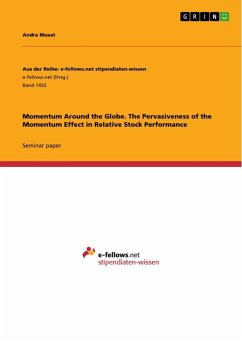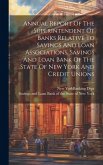Seminar paper from the year 2015 in the subject Business economics - Banking, Stock Exchanges, Insurance, Accounting, grade: 2,0, University of Mannheim, course: Behavioral Finance, language: English, abstract: Extensive research has been dedicated to the momentum effect in the past two decades since it was first documented in 1993 by Jegadeesh and Titman. Put simply, momentum can be understood as persistence in relative stock performance: stocks which have performed well over the past three to twelve months continue to outperform stocks which have performed poorly over the next three to twelve months.The aim of this paper is to gather, compare and evaluate the available evidence so far to show that momentum is effective globally, with a focus on analyzing co-movement. Besides the geographical dimension, the paper will also look at the extent to which profitable momentum returns are prevalent in time and are not only confined to stocks, but are characteristic for much more asset classes. As such, the main contribution of the paper is the brief analysis of the pervasiveness of the momentum effect along three dimensions: geographical, temporal and across asset classes.








